Categories Of Hurricanes
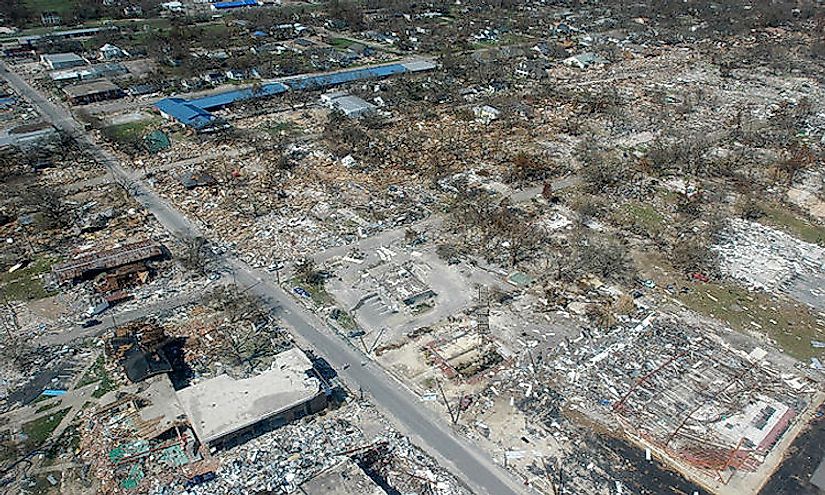
Hurricanes are catastrophic storms that produce winds of 119 km/h or higher. Hurricanes are capable of causing massive losses to life and property and hence the need to classify these tropical storms became necessary. Hurricanes are classified according to the Saffir–Simpson hurricane wind scale (SSHWS). According to this scale, there are 5 categories of hurricanes: Category 1 to Category 5, each with higher wind speeds and greater damaging power than the other.
Category 1 -
Category 1 hurricanes produce dangerous winds that have speeds of about 119-153 km/h. However, loss of human and animal lives is minimal in the case of such storms. Isolated incidents of fatalities may occur primarily due to injury by falling or flying debris. Category 1 hurricanes do not cause much damage to the framework of well-constructed houses but might damage the roof, vinyl sidings, shingles, and gutters. Mobile homes that are unanchored might also be toppled. Power lines and poles could also be damaged extensively, and this might result in power outages. Category 1 hurricanes also can topple shallowly rooted trees and snap large branches of trees which might injure humans and animals. Coastal flooding and damages to piers also result from Category 1 hurricanes.
Some examples of Category 1 hurricanes are Hurricane Hanna, 2008; Hurricane Alice, 1954; Hurricane Gaston, 2004; Hurricane Jerry, 1989; Hurricane Humberto, 2007.
Category 2 -
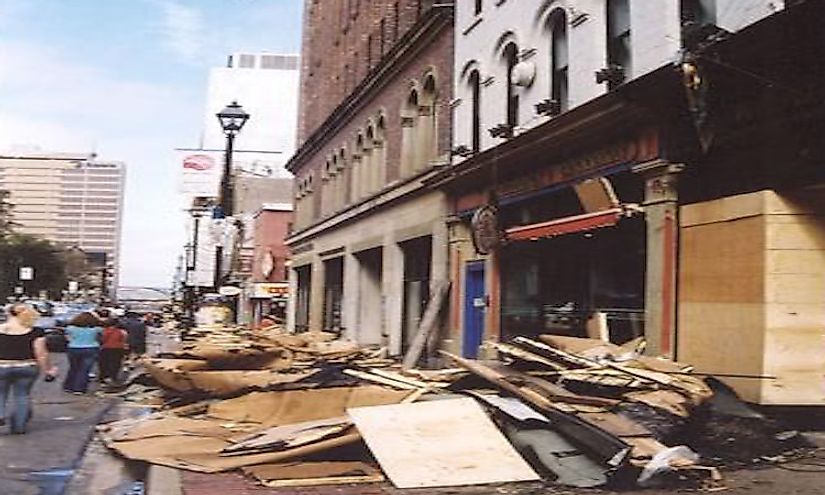
Hurricanes of Category 2 are associated with extremely dangerous winds blowing at speeds of 154-177 km/hr and are capable of inflicting severe damage to property. Well-constructed homes might suffer roof and siding damages. Structural damages to homes might also be caused, and poorly constructed houses can also be lifted by the high-speed winds of Category 2 hurricanes. Power lines are usually snapped off leading to power outages for several days. Trees that are poorly anchored are uprooted, blocking roads or injuring people.
Examples of some Category 2 hurricanes include Hurricane Alma, 1996; Hurricane Juan, 2003; Hurricane Diana, 1990; Hurricane Erin, 1995.
Category 3 -
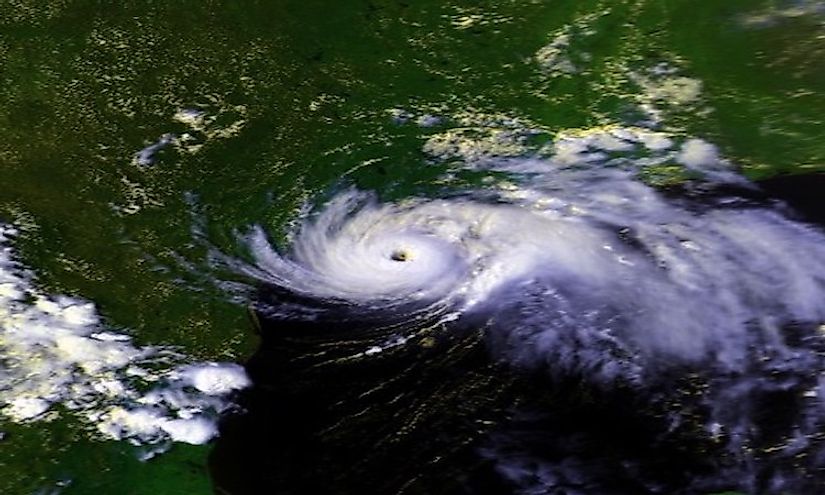
Category 3 hurricanes are known to be major cyclones with wind speeds of 178–208 km/h. These hurricanes destroy mobile homes, cause structural damages to small buildings, especially those having a wooden frame. Small structures near the coasts are destroyed by flooding and debris inflicts damages to larger structures. Trees are uprooted everywhere, and that blocks roads and causes injuries to people and animals. Power lines are almost completely damaged which results in power failure for several weeks. Remote areas under the influence of Category 3 hurricanes might become completely isolated and disconnected from the rest of the world.
Hurricane Alma, 1966; Hurricane Alicia, 1983; Hurricane Karl, 2010; Hurricane Roxanne, 1995; Hurricane Carol, 1954 are all examples of Category 3 hurricanes.
Category 4 -
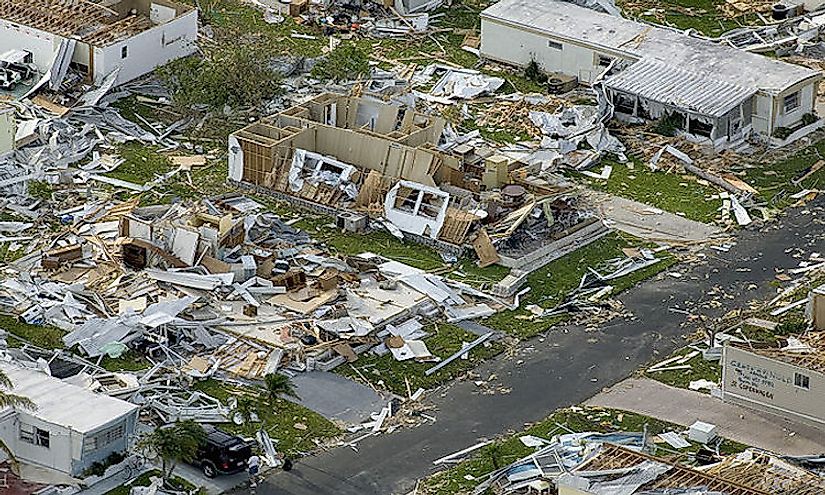
Category 4 hurricanes with wind speeds of 209-251 km/h are catastrophic in nature. They completely flatten manufactured and mobile homes. Canopies of gas stations and other overhang type structures are nearly fully destroyed. Almost all trees with the exception of the strongest ones are uprooted, power lines are completely snapped off, and all pathways of communication are hampered. In the coastal areas, massive erosion of beaches occur and flooding far inland is common. Lack of electricity and fresh, drinking water makes life difficult for people in such Category 4 hurricane hit areas. Losses of human and animal lives might also be recorded during such hurricanes.
Examples of Category 4 hurricanes are Hurricane Matthew, 2016; Hurricane Charley, 2004; Hurricane Madeline, 1976; Hurricane Hazel, 1954; Hurricane Gustav, 2008.
Category 5 -
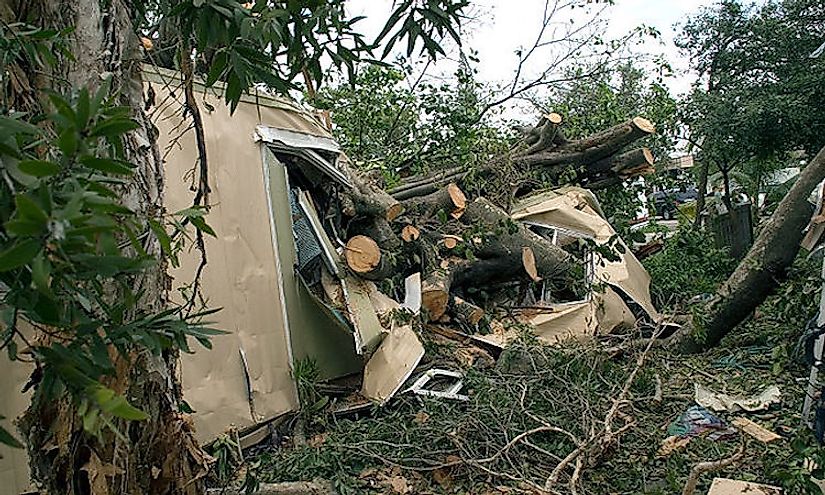
Highest among all categories of hurricanes is the Category 5 hurricane with wind speeds exceeding 252 km/h or higher. Hurricanes of this category destroy almost every structure in their way. Roofs of most residential and industrial buildings are completely damaged. Flooding occurs as far inland as four city blocks and sometimes even 6 to 7 blocks inland depending on the nature of the terrain. All things in the way of the storm waters are swept away. Coastal structures are completely wiped off. Category 5 hurricanes often demand complete evacuation to ensure the safety and security of people. Many lives of humans and animals are lost during such catastrophic storms.
Category 5 hurricanes have in the past caused heavy damage to life and property. Some examples of such hurricanes are Hurricane Camille, 1969; Hurricane Katrina, 2005; Hurricane Andre, 1992; Labor Day Hurricane, 1935.
Categories Of Hurricanes
| Common Questions Related To Categories Of Hurricane | Category |
|---|---|
| What Category Was Hurricane Sandy? | 3 |
| What Category Was Hurricane Katrina? | 5 |
| What Category Was Hurricane Andrew? | 5 |
| What Category Was Hurricane Wilma? | 5 |
| What Category Was Hurricane Charlie? | 4 |
| What Category Was Hurricane Ivan? | 5 |
| What Category Was Hurricane Camille? | 5 |
| What Category Was Hurricane Rita? | 5 |
| What Category Was Hurricane Floyd? | 4 |
| What Category Was Hurricane Isaac? | 1 |
| What Category Was Hurricane Isabel? | 5 |











